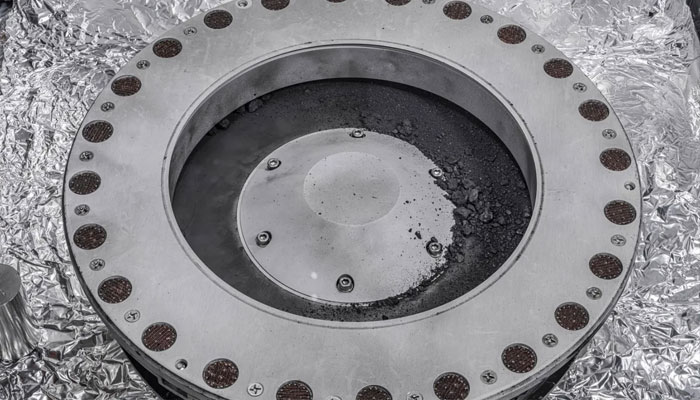HABITABILITY HOPES: NASA says Asteroid Bennu's sample rich in building blocks of life
The rocks and dust from Bennu contain water and a substantial amount of carbon
October 11, 2023

NASA unveiled a pristine asteroid sample collected from the near-Earth asteroid Bennu in October 2020 by the OSIRIS-REx mission, which has arrived on Earth in a capsule.
The rocks and dust from Bennu contain water and a substantial amount of carbon, making it the largest carbon-rich asteroid sample ever returned to Earth.
This carbon and water are essential building blocks for life and may help scientists understand the origins of these elements, which could have contributed to life on our planet.
The analysis of this asteroid sample also revealed hydrated clay minerals, organic molecules, sulfide minerals, iron oxide minerals, and other elements.
These findings are crucial for planetary evolution and biology and provide insight into how water was incorporated into Earth, making it habitable.
The sample contains abundant carbon, a fundamental element for all life, and this discovery excites astrobiologists.
The team behind this mission is now set to explore how much chemistry evolved on Bennu and whether the building blocks of life, such as peptides, were created on the asteroid.
The sample, which contains material from the surface and interior of Bennu, will help scientists understand the asteroid's formation, evolution, and composition. This information is important for NASA's efforts to deflect the asteroid, as Bennu has a potential impact threat to Earth in the future.
The unveiling of this historic asteroid sample has been eagerly anticipated and marks the culmination of seven years of effort from the OSIRIS-REx mission, from its launch in 2016 to the capsule's landing in September 2021.
The pristine material will be analyzed by scientists for the next two years in a dedicated clean room inside NASA's Johnson Space Center. Portions of the sample will be sent to laboratories around the world, while about 70% of it will be preserved for future generations with advanced technology to unlock even more insights about the early days of our solar system and the potential for life beyond Earth.
This asteroid sample represents a significant step in understanding the origins of life and the history of our solar system. It offers valuable information about the building blocks that could have led to life on Earth and the possibility of life elsewhere in the universe.











